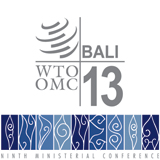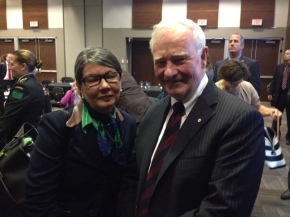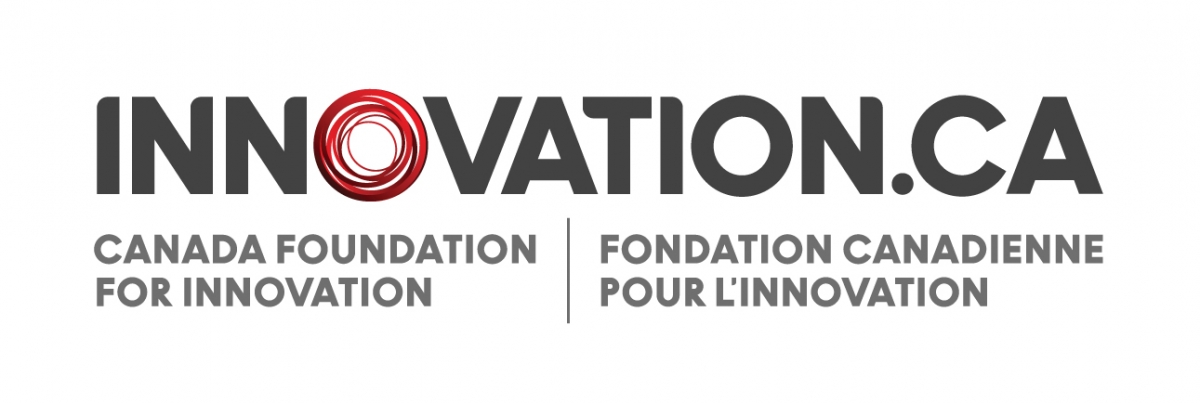
SEM image of carbon nanotubes deposited on a trench coated in hafnium oxide (HfO2) showing extremely high density and excellent selectivity (scale bar: 2 µm). (Image: IBM)
IBM researchers demonstrate the first sub-10 nm CNT transistor, which is shown to outperform the best competing silicon devices with more than four times the diameter-normalized current density (2.41 mA/μm) at a low operating voltage of 0.5 V. The nanotube transistor exhibits an impressively small inverse subthreshold slope of 94 mV/decadenearly half of the value expected from a previous theoretical study. Numerical simulations show the critical role of the metal−CNT contacts in determining the performance of sub-10 nm channel length transistors, signifying the need for more accurate theoretical modeling of transport between the metal and nanotube. The superior low-voltage performance of the sub-10 nm CNT transistor proves the viability of nanotubes for consideration in future aggressively scaled transistor technologies.
Source:
IBM Sub-10nm Carbon Nanotubes transistors, J Nanoletters, 2012: http://pubs.acs.org/doi/pdf/10.1021/nl203701g

IBM has demonstrated a placement density of one billion carbon nanotubes per square centimeter using this approach – leading the way for dramatically smaller, faster and more efficient computer chips. (Image: IBM)
Manufacturing Techniques:
Development of spray process for manufacturing new CNT-modified films
The aim is to design and develop a new spray process for manufacturing novel CNT-modified films suitable for various applications, for example, capacitor films. Part of the study will be to investigate the dispersion behaviour or CNTs in various matrices. The project is in collaboration with Prof Patrick Grant, Prof Steven Sheard (Department of Engineering of Oxford univ) and Dr Peter Rocket (Department of Engineering). www.materials.ox.ac.uk
Transport calculations have already revealed that a carbon nanotube CNT can act as a sensitive spin measurement device or as a spin characterization tool. Using master equation techniques, methods are sought by which magnetic resonance might be detected in systems by measuring the electrical current through them. The research work is carried out in collaboration with the experimental semiconductor group of Prof Charles Smith at the University of Cambridge http://www.sp.phy.cam.ac.uk/SPWeb/home/cgs4.html
Nanostructures for energy applications; Supercapacitors usually use activated meso-porous graphite for their electrodes, but alternatives with higher power capability are being studied intensively, including entangled, meso-porous carbon nanotube CNT films , an application that makes use of the natural tendency of the CNTs to entangle and percolate current at low volume fractions. We are fabricating comparatively large amounts of both multi-walled CNTs by chemical vapour deposition or single wall SWCNTsby arc discharge in house, purifying them, functionalizing their surface to improve their ion storage capability, and then processing them into large area films or buckypaper, on a variety of flexible or stiff substrates.
To address lack of dispersability and electric homogeneity of nanostructures, MoSI nanowires (range of stoichiometries Mo6S9-xIx) is used for advantages containing S atoms in their structure. As such they can form covalent bonds to very diverse molecular entities. Connection to gold nanoparticles and thiol-containing proteins with high yields has been demonstrated. Functionalization of these nanowires will be sought.
Zheng et al. _187_ studied the influence of nanotube chirality on the interfacial bonding characteristics in a PMMA polymer using MD. They considered five different SWCNTs with similar lengths, diameters, and atomic compositions but with varying chiral indices. They conducted pull-out simulations to investigate the interaction energy, interfacial bonding energy, and shear stress of the composite. It was shown that all the above attain highest values for the armchair system, while the zigzag nanotube composite system produced the lowest values. Therefore, for SWCNTs with similar molecular weights, diameters, and lengths, the armchair will act as the best reinforcing agent. www.materials.ox.ac.uk
Source: Research projects 2011-2012, University of Oxford’s Materials Dept. : www.materials.ox.ac.uk
Univeristy of Toronto: Carbon nanotubes (CNTs) have shown great promise as sensing elements in nanoelectromechanical sensors. The electrical, mechanical, and electromechanical properties of CNTs used in sensing applications are reviewed. This investigation indicates which nanotube properties should be carefully considered when designing nanotube-based sensors. The primary techniques used for the integration of nanotubes into devices are discussed with a description of sensors that have been developed using CNTs as active sensing elements. Development of Carbon Nanotube-Based Sensors—A Review: http://amnl.mie.utoronto.ca/data/J23.pdf
Carbon nanotubes in medicine: http://en.wikipedia.org/wiki/Carbon_nanotubes_in_medicine
Reports of toxicity of CNTs are usually presented when the mode of delivery is free floating in media, not for a substrate with CNTs embedded, whereas CNTs embedded into a substrate or made as a substrate promote cellular growth. Depending on the mode of exposure and/or material presentation, CNTs may lead to toxicity or promoted tissue growth (although significantly more research is required). Furthermore, it is important to emphasize that not all CNTs are the same. Some impurities may be left over from unreacted catalysis known to be toxic to cells, while others have fully reacted catalysts presenting relatively pure CNTs to cells. Such differences in CNTs can clearly have profound influences on CNT toxicity.
David A. Stout and Thomas J. Webster, Materials Today, JULY-AUGUST 2012 | VOLUME 15 | NUMBER 7-8| pp 315
Great efforts have been undertaken in both academia and industry to develop new reagents that can improve the PCR (Polymerase chain reaction) amplification efficiency and enhance the specificity, with particular attention to nanomaterials due to their unique physical and chemical properties. AuNPs increased the sensitivity of PCR by 5- to 10-fold as compared to a conventional qPCR and at least 10.000-fold in a qPCR system with shortened reaction time (rapid protocol).
However, how to correctly use those enhancers for long PCR remains unclear. Recently, it has been suggested that single-walled carbon nanotubes (SWCNTs) can act similarly to Mg2+ ions in maintaining + the high activity of DNA polymerase in PCR, but the potential effects of different types of carbon nanotubes (CNTs) on long PCR remain to be elucidated.
Long PCR has become increasingly important in the postgenome era. CNTs with dimensions ranging from 1-2 upto 10-20 nm were tested to have enhancing effects for long PCR. The serious smear bands were significantly diminished, and the nonspecific trailing bands gradually disappeared by increasing the concentration of CNTs. The optimal final concentrations of both SWCNTs and MWCNTs are close to 1 mg/mL.
Zhang et al, BioTechniques, Aqueous suspension of carbon nanotubes enhances the specificity of long P2008, 44, 537–545.
Zhang, M. C. Wang and H. J. An, Nanotechnology, 2007, 18, 355706.



























































-original.png)








































